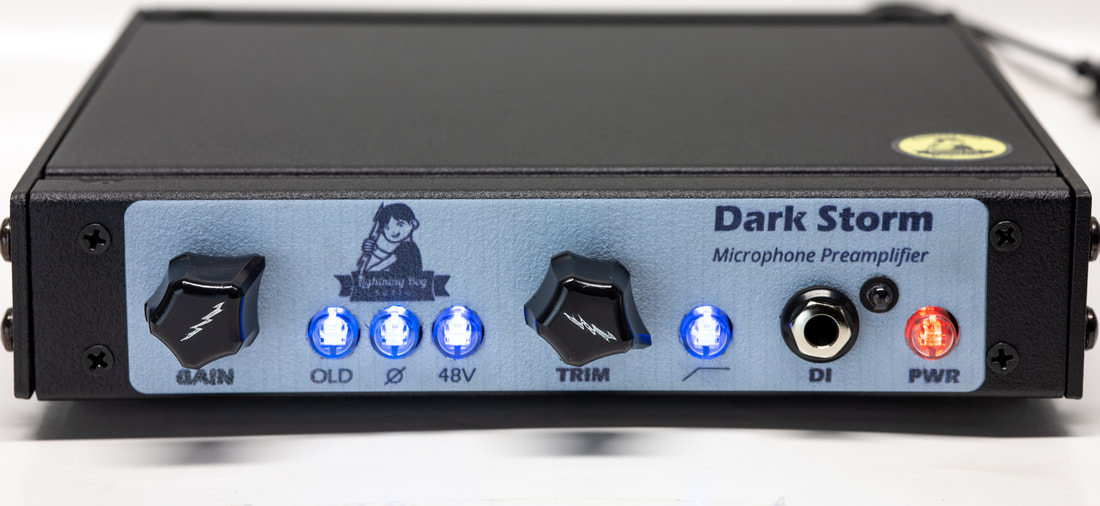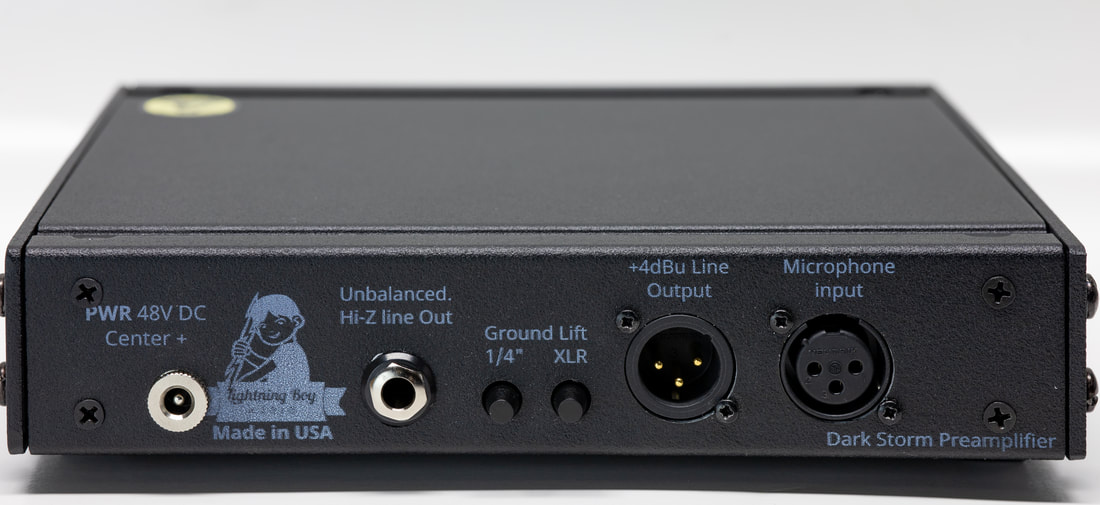|
I've been playing around with some final tweaks to the Dark Storm design. I want it to be flawless and kicking ass right out of the starting gate. Yesterday I very slightly improved its already impressive frequency response, S/N ratio, and THD. But, not all was a success. I have been trying to create a circuit that illuminates a single LED when audio is present. I've done that, but not while also meeting the design requirements. The requirements are that it can have no affect (0%) on the THD of the Dark Storm's audio, that it can not affect the total gain (dB) of the Dark Storm in any way whatsoever, and lastly - all of the components used in the circuit must be currently in production and available. If you know of a circuit that meets these requirements, please educate me. I'll gladly pay you for your time and knowledge.
My best attempt: I opted for a discrete design because it appeared simpler and less expensive to pull off than a digital design. I initially wanted to be able to monitor the incoming signal before it hits the pre. Of the many designs I tried, the best one worked best when monitoring the output of the Dark Storm. Regardless, this design failed because it adds 0.09% THD to the signal. I don't want distortion coming from diodes and transistors that are not directly related to the audio circuit. Unless some wiser individual can turn me hip to a solution, I'll need to just abandon the idea of a signal indicator. I think with any sort of analog metering, such as a VU or bar meter, I'll face the same outcome. The Dark Storm sounds so good right now that I don't want to obscure it in any way. I think a digital solution could work, but probably would introduce some degree of digital noise, not to mention it would probably add a fair bit to the parts bill. Ultimately, is it really necessary to have a signal present indicator when we have DAW's with metering?
1 Comment
This is a story of how a very bad situation gets flipped around 180°. Last year around this same time I started designing a 500 series Mic Preamp that would become the Super Storm. After many prototypes and tons of frustrating manufacturing failures I had 9 produced to a level that I would call "Production Prototype." Some of these made it out to other studios for feedback. 2 were sold to engineers in Muscle Shoals, AL. The electronics were developed to a high degree and I was comfortable with that aspect. However, I discovered this product needed a very high degree of accuracy when it came to the metal fabrication for it. So high that I was unable to produce it in house. I spent months working back and forth with a number of companies as I tried to get samples and quotes for the faceplate and bottom plate. Ultimately I was unable to get anything tangible from anyone. This is partially because there are middle men "helping me" to communicate and coordinate with the fabricators and no one seems to be interested in producing runs of just 100 units. Sadly I had to give up and shelf the Super Storm. I had a ton of time and money invested in the Super Storm. I pretty much had all my eggs in that basket. So, I had no choice but to brainstorm on how to salvage the situation. I needed to come up with something similar that I could fabricate in-house. Basically, it had to be something that could allow for a greater margin of error without looking or functioning less than ideal. In comes the half-rack enclosure. The panels come somewhat pre-fabricated and powder coated, albeit with a hefty price tag. I just need to drill them out and print the graphics. Ditching the 500 series format opened up plenty of new options. For starters, much more physical space to work with and most importantly, no limitation on power supply requirements. The 500 series has +/- 16V rails with a very limited amount of current available. A 32V span provides sufficient headroom for the most part, but more is definitely better and The Dark Storm has +/-18V rails. Since the enclosure is a bit bigger than a 500 Series module I could fit an extra 2 transformers inside, as well as additional switches and jacks to expand the flexibility over what the Super Storm had. The added features are a built-in TI Box with a front panel instrument input, a transformer coupled Hi-Z (wet) 1/4" output, a low cut switch, and ground lift switches for the XLR and 1/4" jacks. I noticed the noise floor is much lower than my 500 series modules. That is 100% related to the power supply. There's a lot of power regulation onboard the Dark Storm, which doesn't exist on the Super Storm. The Super Storm just had to take the +/- rails from the 500 series rack, whereas the Dark Storm has to create +/-18V from a 48V power adapter. It's a good quality adapter, but the added voltage regulation to create the +/- rails makes for a noticeably quieter background. I think it's better than the Super Storm in every possible way and it uses most of the Super Storm parts that I already invested in. Sure, it's a little more expensive than the Super Storm would have been, but the Dark Storm is more flexible and more importantly - it sounds better!
I only have 1 Dark Storm prototype at the moment, with the second in the build queue for next week. I'm going to try to improve the look of the 2nd prototype in hopes of having a production prototype. If it works out like I'm planning, pre-ordering can commence. New custom LBA mini control knobs - made in house! These are mini knobs, but I also have a bigger knob which will be on my more expensive creations. That's a cosmetic upgrade with the new EQ mod, but there's more than just looks here. Enough people griped about the "Vision" knob being too high in frequency or that it wasn't audible for some, that I was convinced to design this upgrade. The new "Range" switch toggles between two different frequency options for the Vision knob. "Hi" is the stock setting of 10kHz, whereas "Lo" is just 3.4kHz. The Dark switch provides a very gentle high frequency roll-off at about 10kHz, which almost perfectly mirrors what the "Hi" setting of the Vision does. I say almost because you can actually get a slightly flatter frequency response across the spectrum with Dark on, Range Hi, and Vision 100% than you could with dark off and the vision turned down all the way. That is however, with more color. So if you want an un-EQ'd sound, but you do want more color, this configuration is right for you. It gets real interesting when you have the Dark on, Range Lo, and Vision 100%. In this configuration you get an upper-mid-band wide bell-curve boost centered at about 3.4kHz. That might just be the ticket if you're looking for more presence, but not necessarily more brightness. If you turn the vision knob down all the way, the dark switch can still be used, since it's a separate circuit. Vision & Range form an active (tube driven) high frequency shelving boost equalizer. Dark is a passive HF shelving attenuator. You can get a variety of new sounds with just these two new switches. Enjoy!
New orders will come standard with the EQ Mod and labeled accordingly. The price for a new DiVision has gone up slightly to allow for the added parts and labor. $349 USD new. Owners of stock DiVisions can send them in for the EQ Mod service for $75 plus shipping upon first emailing [email protected] with your DiVision serial number. This Mod includes the following:
|
Details
About the AuthorMike Congilosi II, Owner/Designer/Electronics Engineer at Lightning Boy Audio and Owner/Audio Engineer/Music Producer at LBA Studios. Archives
July 2025
Categories |

 RSS Feed
RSS Feed


